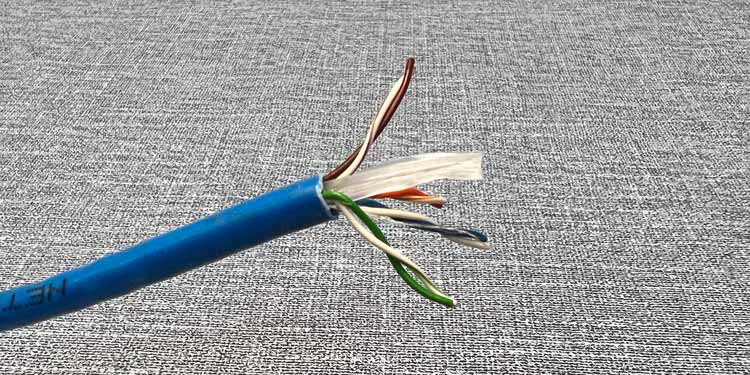CAT5E is currently the most popular type of cable, supporting max bandwidths up to 1000mbps. A decade ago, most people would’ve considered 1Gbps overkill but it’s pretty commonplace now.
CAT6 and CAT6A feel like they’re in a similar spot right now. CAT6 isn’t priced much higher than CAT5E, but it supports up to 10x higher speeds among other improvements. This makes it an attractive option for anyone looking toinstall Ethernet cables. This is reflected in the real world as well, as CAT6 is increasingly replacing older standards.
CAT6A cables are superior to CAT6 due to their reliable performance over longer distances. But they also have certain disadvantages, such as being harder to install. If you’re confused about which one to go for, we’ll cover the technical differences between the two in this article and help you decide which one is best suited for your specific needs.

Comparison Between CAT6 And CAT6A
Let’s start by understanding how these cable types differ spec-wise.
CAT6 and CAT6A both support10GBASE-T(IEEE 802.3an-2006), meaning they cansupport max bandwidthsof up to10 Gbps. But these are hypothetical stats under ideal conditions.
During real-world implementation, factors likeFrequencyandCable Lengthcome into play as well. CAT6 cables support up to250 MHzfrequency, while CAT6A is capable of operating at500 MHz.

The 10GBASE-T standard defines a frequency of 400 MHz for 100-meter connections. As CAT6 operates at 250 MHz max, it can support10Gbps connections up to 55 m (180 ft)depending on the installation. At longer distances, Ethernet over CAT6 operates at 1000Mbps or a similar bandwidth. CAT6A, on the other hand, can support10Gbit over the full 100 meters.
CAT6 and CAT6A both supporthigher signal bandwidthscompared to their predecessors. This allows for improved specs such as higher max speeds, but it also makes the signal prone to more interference.
CAT6 cables use a separator called a spline to attempt to physically isolate the four pairs and reduce crosstalk.
In addition to this, CAT6A also employs other measures like shielding to minimize interference from outside noise andpreserve signal integrity.
As the name implies, Category 6Augmented(CAT6A) cables are physically bigger. CAT6A uses thicker conductors and jackets and has a higher bend radius. It also requires compatible jacks, patch panels, and connectors. All of this makes installing and terminating CAT6A comparatively harder.
Right now, even CAT5E would be plenty for most of the world. But the thing about installing cables is, it’s a long-term decision. The current installation will last you up to a decade or longer.
Looking at recent history, Gigabit Ethernet and higher standards will likely become the norm in the next few years. When you do subscribe to such high-speed connections, you don’t want your cable to be the limiting factor.
If you want to future-proof your installation, CAT6 is the way to go. It’s an excellent choice for personal use, as well as for small businesses.